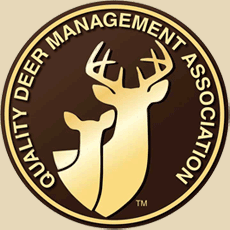The dove shoot is a time honored tradition in many parts of the south. As Labor Day weekend rolls around hunters anxious to get into the field dust off shotguns, stools, and fill their vests with shells and anxiously await the evening flight of opening day doves.
Usually occurring around the first weekend of September, the dove opening is a social event. Perhaps that’s why it’s called a shoot instead of a hunt. Gunners take stands around manicured fields and take aim at these fast, maneuvering targets that challenge marksmanship and tempers. Many hunters got their initiation into the ranks in a dove field.
To have a good challenging hunt, most land owners want to know how to best prepare their fields to attract doves and hold doves. While the laws haven’t changed in some time, it’s still difficult for many to know what makes a good dove field legal. Billy Dukes, the Small Game project manager for the South Carolina Department of natural Resources says, “there are two ways to have a good and legal dove field.” He continues by saying “First there’s by normal agriculture practices, which most know about”, but then there is another statement he adds that says, “a crop may be grown and manipulated for wildlife management purposes.”
To paraphrase, if you grow sunflowers, and brown top millet, wheat etc., and bush hog the crop before season, it’s legal. Adding additional seed/crops to the field is not.
When it comes to choices of what to plant for doves it’s hard to beat the sunflower. Dukes says that “sunflowers are the foundation of all good dove fields.” Brown top millet is also good, but only to a degree. The advantage brown top millet gives is its shorter maturation rate. In other words, you can plant it a bit later and still have a crop by opening day. Or plant the same time and have it seed out early to help draw the birds before season. But as Dukes reminds us, “A good field with Sunflowers is going to draw birds, there really is no reason to push the limits.”
When deciding when to plant, it’s a simply mathematical formula. Start with opening day which this year is September 1 and count back the time it takes for the crop to mature and add two weeks. In other words, you want to start manipulating your crop at least two full weeks prior to the opening of dove season. Somewhere around the 10th to 15th of August, you should have your crops mature, and beginning to mow for distribution so the birds can access the seeds.
The ideal time to plant Sunflower is around the first of May, preferably no later than May 15th. Since most Sunflowers have a 100-120 day maturation rate. Many different seeds are available Medium size seed is preferred. Peredovik sunflower seed (90-100 day maturity) is suggested. It’s hardy and readily available and has a medium size that doves can easily eat. Cultivate at least twice to keep weeds under control.
When it comes time to mow the preferred method is to sickle mow the stalks, allow the seeds to dry and then bush hog to scatter the seeds. If you don’t have access to a sickle mower, then simply bush hog the crops. Do a little each week and increase the mowing as opening day approaches. It’s best to mow strips in your field, as opposed to mowing the whole field. This allows hunters to hide in the standing rows and provide ample cover. It also separates the doves for better hunting. I prefer to mow strips at least thirty yards wide and leave strips of 30 yards wide. Then I will mow 10 yards off of the strips to increase the size of the openings as the season nears.
Planting and maintaining a good dove field takes some work and expense. But having a legal field is easy. It starts with Sunflowers, many farmers like to add in brown top millet for variety and some say it helps. One advantage to brown top millet is it’s a lot less expensive to plant. But if your neighbor has sunflowers and you have brown top, be ready to listen to a lot of shooting while staring at a blank sky. The doves will choose sunflowers over brown top every time.
Most dove hunters hunt an average of 3-4 days per year, and 60% of banded doves are harvested in the first 8 days of the season. It’s easy to see that dove hunting is an opening day event. This year opening is Noon, Saturday, September 1st . In South Carolina and most adjoining states, the opening weekend which includes this year, September 1-3, is limited to afternoons only. By Tuesday morning, approximately 80% of the dove hunters have given up and moved onto other quarry. The doves are still there, if you really want a lot of good action, and a field to yourself, stay after them when everyone else has gone fishing.




